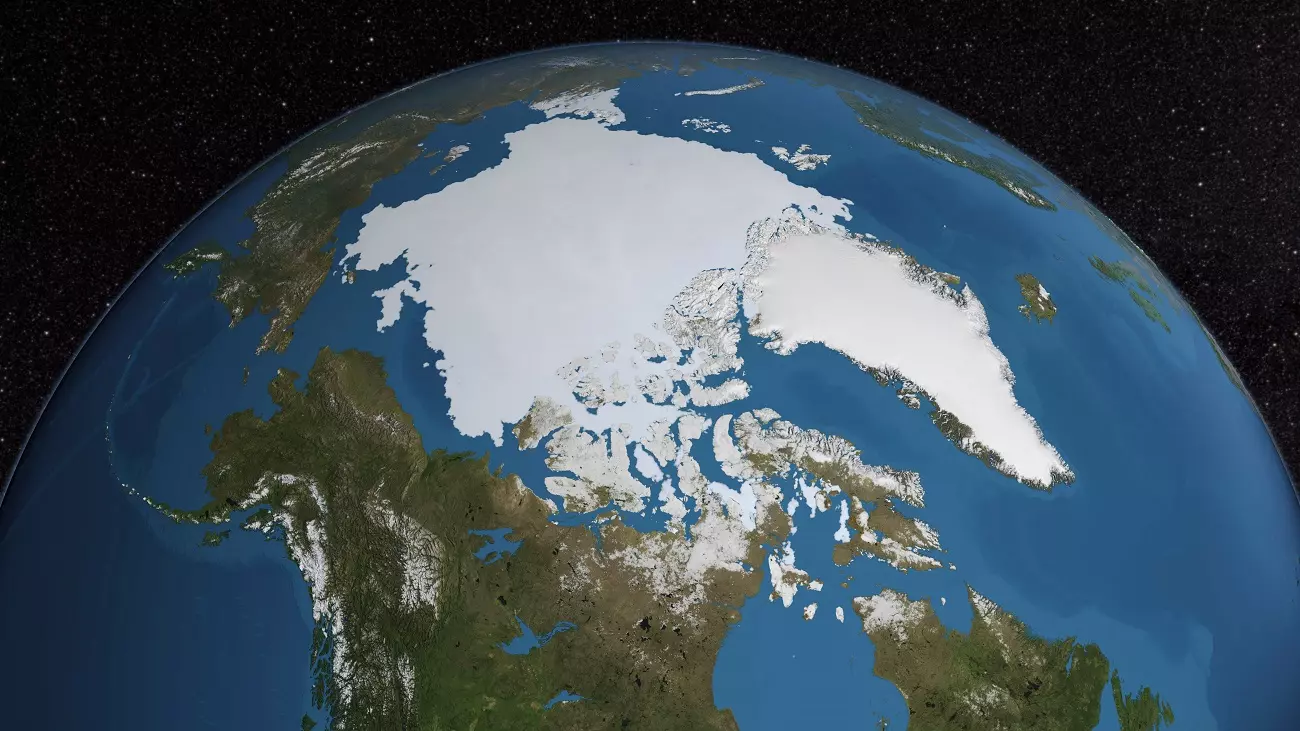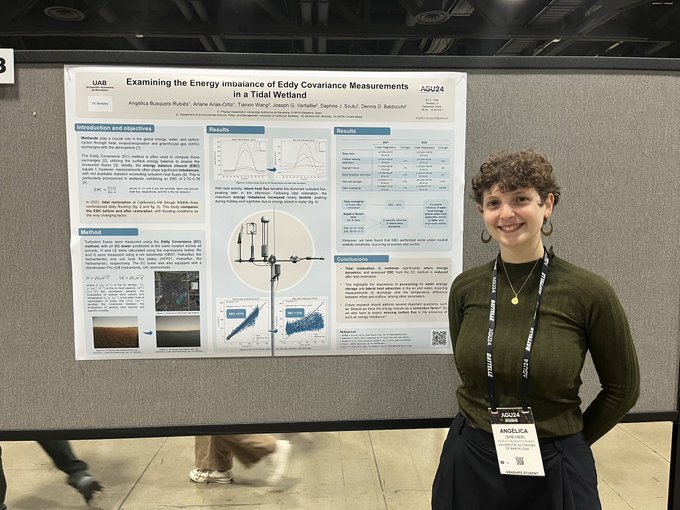Experiments
How will sea urchin larvae grow in an acidified ocean without any food?
A PhD candidate at ICTA-UAB conducted an experiment in Sydney, Australia, studying the impact of ocean acidification and feeding on sea urchin larval growth.
How will sea urchin larvae grow in an acidified ocean without any food?
Hey everyone – My name is Roberta Johnson and I’m a PhD candidate at the Universitat Autònoma de Barcelona in Barcelona, Spain. My research focuses on calcifying marine plankton, which basically means, very small, shelled organisms that float in the ocean. Some of these are single celled plants, such as coccolithophores, and others are very small animals, such as pteropods. I am also interested in the impacts of climate change on plankton, because organisms that build a shell or skeleton made out of calcification are particularly vulnerable to ocean acidification. And what is ocean acidification? It’s the gradual decrease of ocean pH due to increasing atmospheric carbon dioxide, which means that it’s more difficult for these organisms to build their skeletons.
I recently had the opportunity to run an experiment in my hometown of Sydney, Australia. I got in contact with the Byrne lab at The University of Sydney who work on echinoderms, the phylum that sea stars, sea cucumbers and sea urchins belong to. Professor Maria Byrne and I developed an experiment focusing on the larval stage of sea urchins. Before sea urchins settle to a rocky surface, they belong to the plankton, floating in the water column, growing their skeleton and feeding on algae. In this experiment, we wanted to see how ocean acidification and feeding or starvation impacted the sea urchin larval skeleton. We’ve already seen that the larval stage of juveniles are vulnerable to ocean acidification, and that starved larvae grow longer arms to assist with collecting food and larvae with food have shorter arms, so the question we are asking here is – is there an interaction between feeding regime and ocean acidification on sea urchin larval growth? Or, are we going to see really short arms in the larvae that are fed and grown in ocean acidification conditions?

The Sydney Institute of Marine Science. Photo credit: www.lightwell.com.au
The first step was to find enough egg and sperm-bearing sea urchin adults to begin the fertilisation process. You can’t tell if sea urchins are male or female just by looking at them. You need to do a small biopsy using a needle which you insert at the bottom of their test (test = sea urchin skeleton) in the thin tissue surrounding their mouth, and then extract a little bit of body tissue where there gonads (sexual organs) are located. You know it’s a female if a yellowy substance is collected and a male if a milky substance is collected. The species we wanted to focus on here is called Heliocidaris tuberculata, a red sea urchin that is found in the South East coast of Australia, one of the world’s climate change hot spots.
I went snorkelling many times in places where I would normally find a lot of urchins, however due to some very big recent storms and floods in Sydney during March 2021, much of the harbour populations of urchins were wiped out because of the influx of fresh seawater. This has happened before, and populations usually take 5 to 10 years to recover. So to find some urchins, I had to go collecting along the coast, which can deal a lot better with an influx of fresh water.
A popular snorkelling spot in Sydney is South Maroubra, and within 30 seconds of jumping in the water, I had already collected 2 urchins of the species I wanted. There were several species here – Centrostephanus rodgerseii (a species moving southward due to global warming and is now invasive to Tasmania where it is destroying kelp forests), Heliocidaris erythrogramma, and my target species, the less common Heliocidaris tuberculata. I went at low tide and the conditions were perfect – the water was flat and super clear. I collected 10 sea urchins in total, as I wanted at least 2 males and 2 females to perform cross fertilisation and to ensure that there was sufficient genetic diversity in the larvae.
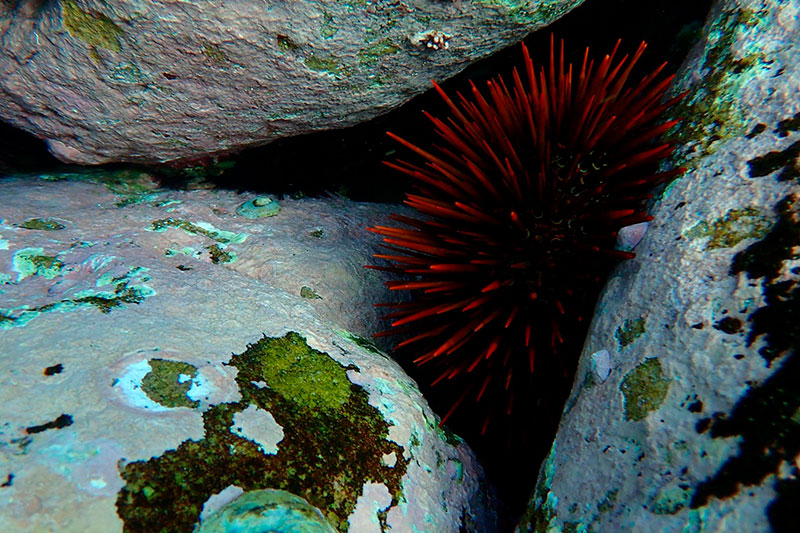
Target sea urchin species Heliocidaris tuberculata. Photo credit: Emily Mclaren.
The experiment was conducted at the picturesque Sydney Institute of Marine Science, a state of the art marine research facility. The adult urchins were placed into large tubs outside with fresh seawater from the harbour flowing directly through them. To simulate ocean acidification, I controlled the carbon dioxide levels bubbling into the water (which lowers the pH) using the Apex Neptune System for home aquariums, which is a great way to remotely monitor and alter the experiment conditions at the aquarium. For feeding, I used a swimming algae so that the larvae could eat while they float in the seawater.
As larvae can be sensitive to changing conditions, and to prevent the build-up of microscopic organisms and algae in the experimental containers, the seawater needed to be filtered to 1 µm (one 1000th of a mm) and then UV treated to ensure no living organisms passed through to the larvae.

Left: The adult Heliocidaris tuberculata were held in large tubs outside full of rocks, seaweed and fresh flowing seawater to replicate their natural environment. Right: Apex aquarium system set up to control all the temperature and pH of the seawater. The experimental jars were placed into the blue water baths. Photo credit: Roberta Johnson
Once the target conditions were achieved for the experiment (pH 7.7 to simulate the predicted ocean pH by the year 2100 and control conditions to reflect current ocean pH levels), potassium chloride was injected into the gonad region of the urchins to induce fertilisation. The eggs and sperm were combined from both males and females. Fertilisation was near 100% successful and after 3 hours, approximately 150 larvae were placed into each of the experimental pots (4 groups each with 5 pots: acidified fed, acidified unfed, control fed, control unfed).
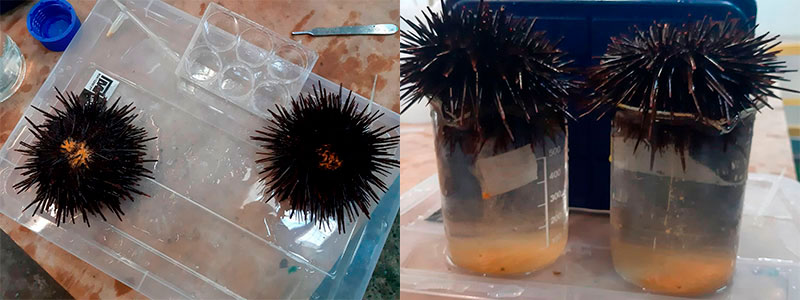
Left: Males spawning. Their sperm pools on the top of their body. You only need a very small amount to fertilise a lot of eggs. Right: Females placed upside down releasing eggs into beakers.
From the second day of the experiment, I would feed the urchins every day with 20,000 algal cells per ml of seawater, and refresh their conditions by changing over 50% of water with fresh seawater. Every day I would monitor the pH of the containers to ensure it was maintained over the course of the day, and also monitor the progress of the larvae to ensure they were surviving in the experimental conditions.

Top left: 24 hours post-fertilisation inside a microscope. Cell is approximately 100 µm in diameter. Top right: 48 hours post-fertilisation. Bottom left: 72 hours post-fertilisation. Bottom right: 96 hours post-fertilisation. Images taken through the eyepiece of a compound microscope. Photo credit: Roberta Johnson
The experiment ran for 4 days, and on the final day, the water was gently removed with a small sieve to ensure only the sea urchin larvae remained. These samples were then photographed using a compound microscope, and the length of the arms measured to determine if there was a difference between the groups.
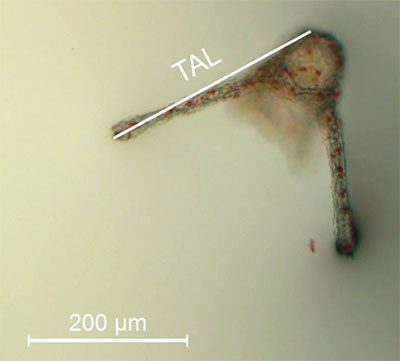
Image taken with a compound microscope. Individual sea urchin larvae will be measured for total arm length (TAL). Photo credit: Roberta Johnson.
These images are still being analysed so stay tuned for the results!

